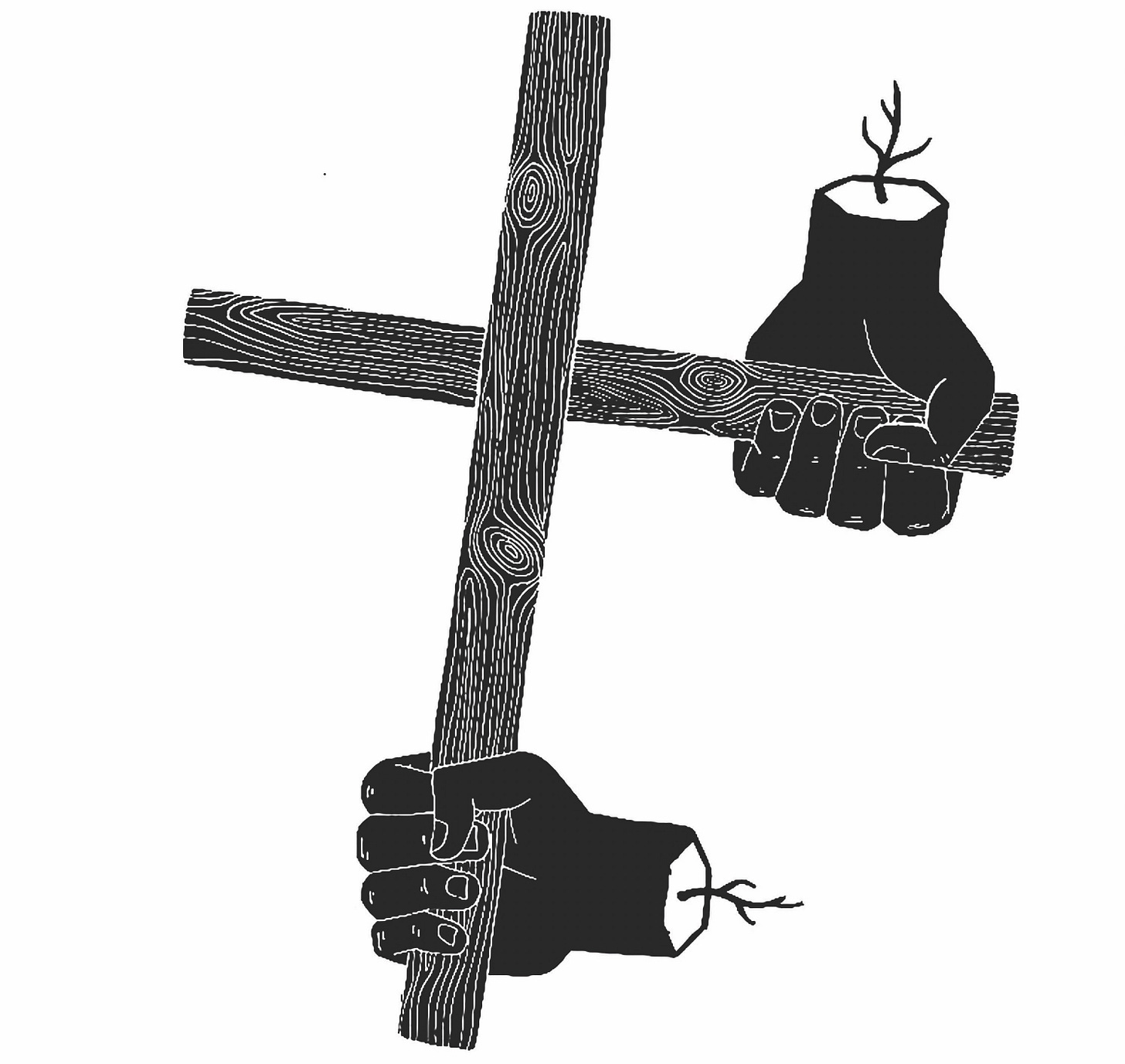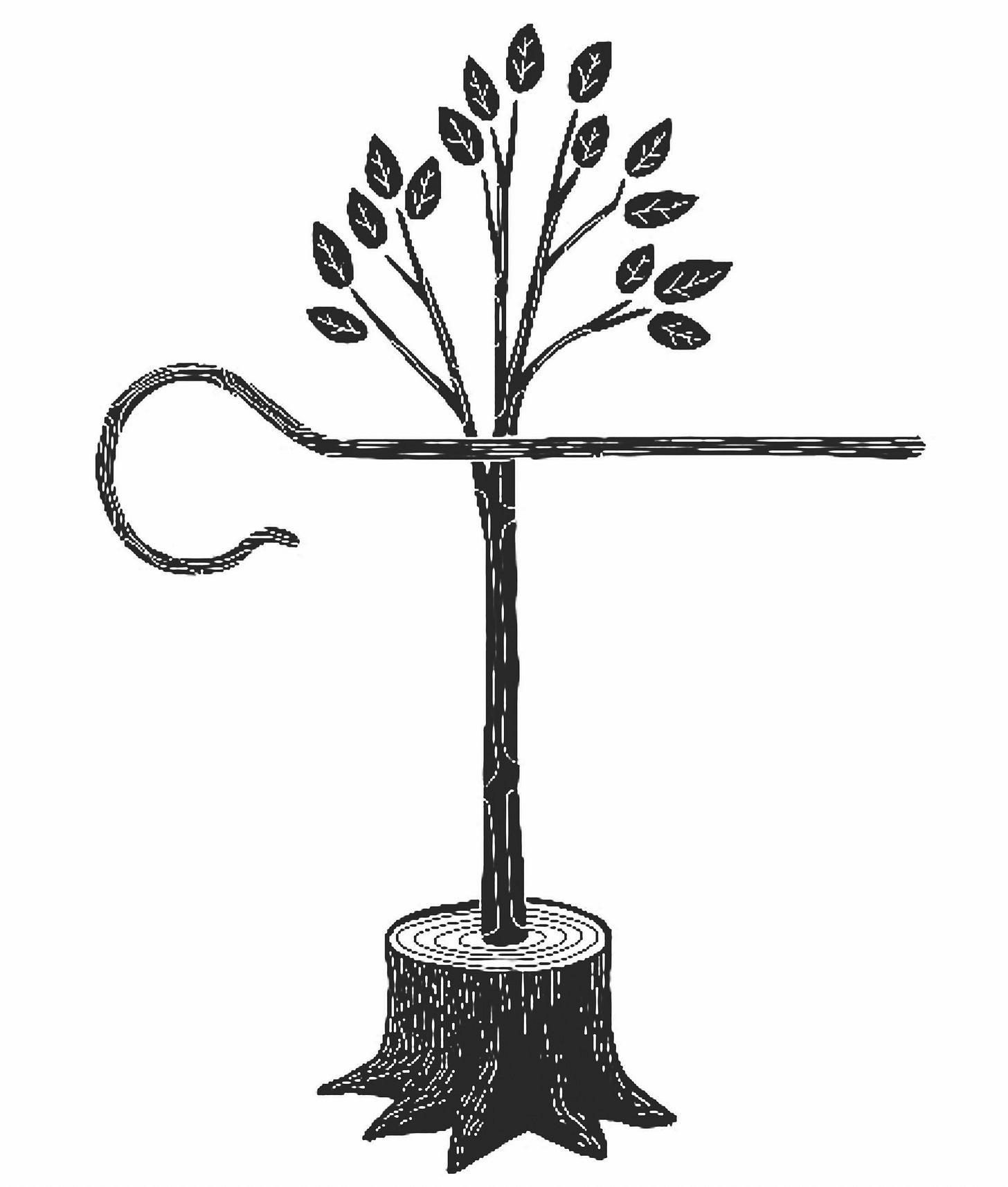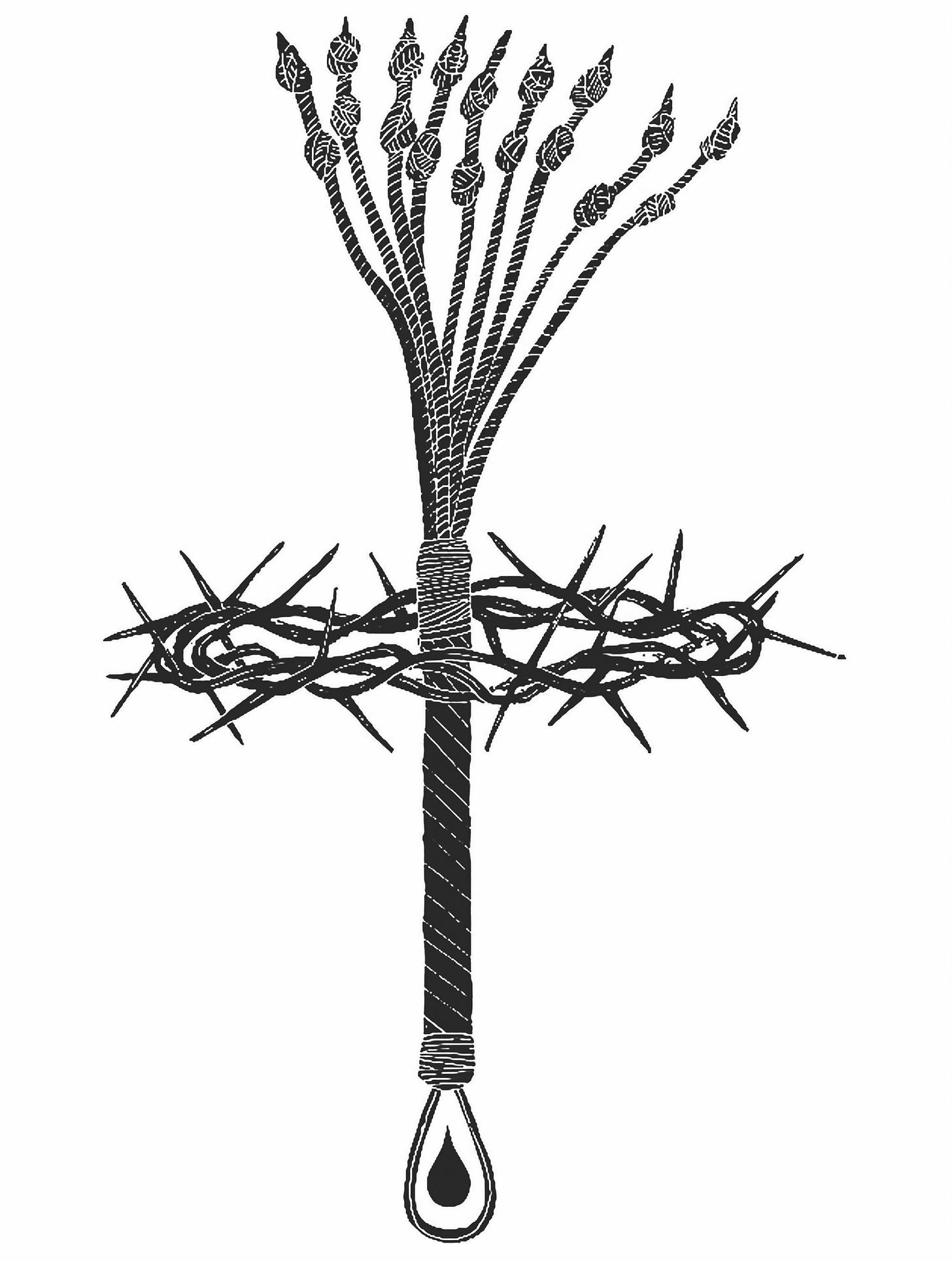Atonement, Vengeance & the Hope of Zion
In a scene both viscerally vivid and powerfully symbolic, Moses 7 presents the consummation of the Godhead’s grand design for the universe: “We will receive them into our bosom and they shall see us; and we will fall upon their necks and they shall fall upon our necks, and we will kiss each other; And there shall be mine abode, and it shall be Zion, which shall come forth out of all the creations which I have made” (Moses 7:63–64). This moment of climactic (re)unification captures the ultimate achievement for which Christ labors, a community fully integrated in love and harmony, bound to each other and to their God, after a harrowing but educative journey through mortality. Zion is the goal toward which humankind, in collaboration with the Godhead, is striving. All humanity—having been battered and bruised psychologically, emotionally, and physically during their mortal sojourn—are made whole through the atonement. Zion is the concrete manifestation of a universal at-one-ment eventuating in a new world, immersed in the light of the Holy Spirit.
This vision of at-one-ment culminating in Zion is one of the key interventions of Restoration teachings, one that represents a powerful and potentially novel conception of atonement as a comprehensive and universal project of reconciliation and healing. This theology has rich implications for how Latter-day Saints can enact these understandings of woundedness and healing in our social and political systems—including in Latter-day Saint attitudes toward contemporary penal practices. However, a Restoration project begun so auspiciously has yet to break completely from atonement theologies that undergird much of the Western Christian tradition and fulfill this radical potential. In this essay, I make the argument that Restoration atonement teachings come into tension with atonement frameworks inherited from other Christian traditions. Starting with Tertullian, a legalistic view of salvation infiltrated and soon dominated Western atonement theology, evident not only in the theological language of sin and retributive punishment but also strikingly manifest in penal codes and practices. Restoration teachings (and etymological insights) provide the means of a different conception, shifting from sin and retribution to woundedness and healing as the polarities that atonement might be reconceived to address. In our current time, the differences between the inherited and restored atonement theologies compel us to wrestle with new ways of living in community.
Origins of Retributive Justice
Theologies of atonement and penal practice are tightly intertwined in Western Christian culture. Satisfaction theory, first articulated by Anselm, is one of the most dominant and enduring atonement theories, stipulating that human sin offended “the honor of God and brought disharmony and injustice into the universe” and required a “debt payment . . . to restore God’s honor or to restore order and justice in the universe.” As J. Denny Weaver explains, the “voluntary death of Jesus paid or satisfied a debt to God’s honor that sinful humans had no way of paying themselves.”1 In his book, God’s Just Vengeance, Timothy Gorringe asserts that the penal system in England, for example, has its roots in this especially virulent version of atonement theology, which “provided one of the subtlest and most profound of . . . justifications, not only for hanging but for retributive punishment in general.”2 More specifically, he argues that the “connection of satisfaction theory with the retributive justice theory of punishment was a commonplace of late nineteenth-century theology. . . . In fact, satisfaction theory emerged in the eleventh century, at exactly the time as the criminal law took shape.”3 Satisfaction theory, in other words, finds its penal equivalent in retributive justice.
Retributive justice became central to North American Protestantism after the Reformation. As Diarmaid MacCulloch writes, “One of the most important consequences of the European Reformation was the export of a militant form of English Protestantism to North America,”4 of which retributive justice was an element. As late as the nineteenth century, theologian William Paley explicitly linked the divine infliction of pain to the satisfaction of justice: “By the satisfaction of justice, I mean the retribution of so much pain for so much guilt; which . . . we expect at the hand of God, and which we are accustomed to consider as the order of things that . . . justice dictates and requires.”5 The philosopher Friedrich Nietzsche’s analysis of the psychology behind such versions of justice seems accurate: “Every injury has its equivalent and can actually be paid back, even if only through the pain of the culprit. . . . To what extent can suffering balance debts of guilt? To the extent that to make suffer was in the highest degree pleasurable [emphases original].”6 Therefore, Christ’s suffering provides the satisfaction necessary to zero out the sum total of human offense, resulting in a state of equilibrium. In this view, not only is the suffering and crucifixion of Christ necessary to repair the damage initiated by Adam’s sinful fall, satisfaction theology emphasizes that only the punishment inflicted upon the innocent Christ at the behest of the Father can assuage his anger toward Adam and Eve and their subsequent human family.
The roots of atonement theology based on retributive justice are traceable to the writings of Tertullian (c.155–240? CE), who created a legal framework for atonement theology, representing a substantive shift from the doctrine’s earlier articulation among the Greek patristic fathers. Irenaeus (c. 120/140–c. 200/203), for example, suggested that atonement was educative rather than punitive—the movement from paradise to earth being a step closer to the divine life rather than a fall away from the Godhead, with eventual divinization to follow. These Fathers (including, among others, Origen, Gregory of Nyssa, and his sister, Macrina) regarded the statement in Genesis 3:22 rather more literally than did subsequent theologians: “They have become as one of us, knowing good and evil.” Ireneaus declared that “Man has received the knowledge of good and evil . . . Wherefore he has . . . had a two-fold experience, possessing knowledge of both kinds, that with discipline he may make choice of the better things. But how, if he had had no knowledge of the contrary, could he have had instruction in that which is good? . . . How, then, shall he be a God, who has not as yet been made a man?”7 Origen, a few decades later, had an equivalent view of morality as necessarily entailing the experience of good and evil: “ You could not have reached the gentle springs without first having to overcome sadness and difficulties.”8 The view of humans as incomplete creations, like children “brought into being with all the imperfections endemic in human nature but with the prospect of development as part of God’s creative plan,” found “many supporters” in the early Christian centuries, notes B. R. Rees.9
In contrast to the emphasis among Greek patristic fathers on the educative repercussions of the fall and the moral development made possible by Christ’s atonement, Christians influenced by Roman law interpreted the fall and atonement chiefly in penal terms. In his survey of Christian doctrines of atonement, the early twentieth-century Anglican theologian Hastings Rashdall notes that such influence can hardly be exaggerated, and asserts that the “whole conception of religion—of God, of duty, and of salvation—is poisoned by the substitution of legal for moral conceptions. Morality is for [Tertullian], as for no previous Christian writer, a doing of the will of God . . . because an autocratic Deity commands it. . . . God is represented almost entirely as a criminal judge . . . Fear becomes the prevailing religious motive.”10
With Tertullian, then, began the legalism that undergirds Western atonement theology. The legacy of such a reading for the Christian West is prominent and pervasive, particularly in the retributive penal culture of North America.
Justice and Atonement in North America
Of the major Reformers, John Calvin’s theory of retributive atonement exerted the greatest influence in the United States. Moving beyond Anselm’s satisfaction theory of atonement in which Christ’s sacrifice restores God’s honor, Calvin develops a penal substitution theory first intimated by Justin Martyr and Tertullian. In Calvin’s version, Christ pays the punishment for humankind’s desertion by inserting himself between God’s wrath and the fallen creation. God’s anger is thereby propitiated. “By his sacrifice,” in Calvin’s words, Jesus “appeased the divine anger; by his blood washed away our stains; by his cross, bore our curse; and by his death, made satisfaction for us.”11 The influential John Milton describes Christ’s atoning sacrifice in terms that are more poetic but equally as troubling. To God, the Father, Jesus offers intercession for humankind:
Behold me then, me for him, life for life / I offer, on me let thine anger fall; / Account me man; I for his sake will leave Thy bosom, this glory next to thee / Freely put off . . . and for him lastly die . . . on me let Death wreck all his rage / . . . and return . . . to see thy face, wherein no cloud / Of anger shall remain, . . . wrath shall be no more.12
While satisfaction atonement differs from penal substitutionary atonement, retribution is fundamental to both ideas. Through Adam and Eve’s rebellion, Calvin argues that every descendant is born “tainted with the contagion of sin. “Iniquity is an abomination to the Master under whom we live,” and “those who, by wicked lives, provoke his anger, will not escape his vengeance.”13 God’s vengeance, in Calvin’s eyes, was often implemented by capital punishment—decreed by civil officials but under the guidance of proper ministers. For example, an acquaintance, Michael Servetus, was burned slowly at the stake after Calvin instigated charges against him for heresy, which Calvin justified in these terms: “Servetus . . . suffered the penalty due to his heresies . . . And what crime was it of mine if our Council, at my exhortation, indeed, but in conformity with the opinion of several Churches, took vengeance on his execrable blasphemies?”14 The “Lawgiver himself puts the sword into the hands of his [civil] ministers” to “execute [His] judgments.”15 And if criminals escape their civil punishment, “God sends executioners from other quarters.”16
The “immensely influential” criminal metaphors encountered in Calvin’s atonement theology and penal policies reveal a congruence of retributive conceptions in both his doctrine and Western Christian conceptions of damnation.17 In the early Republic, revival sermons were replete with depictions of the evils of sin, and the fires of everlasting hell, in an attempt to frighten the populace into conversion and rebaptism. The most famous of these is, of course, Jonathan Edwards’s oft-quoted sermon, “Sinners in the Hands of an Angry God,” which he gave on a number of occasions to a rising cacophony of fearful cries throughout the congregation. This and similar sermons of itinerant revivalists employed fear as a motivator for religious reformation. Edwards’s uncle was so frightened at the awful prospect of his imminent damnation that, following a revival in Northampton, he committed suicide in order to preempt his judgment.
Despite a backlash from other religious and philosophical quarters, this legacy of vengeful justice survives into the modern era. Marie Gottschalk argues that early colonists, Puritans in particular, “made virtually no distinction between sin and crime,” establishing a penal justice system “that was in many ways another arm of religious authority.”18 As a result, a “narrow conception of retribution has become a central feature” of the American penal system with “mercy, forgiveness, and redemption” omitted.19 While most Americans are aware of Alexis de Tocqueville and Gustave de Beaumont’s praise for American democracy, few know of their criticisms of the American penal system. Both men wrote: “While society in the United States gives the example of the most extended liberty, the prisons of the same country offer the spectacle of the most complete despotism.”20 These trends were reinforced by nineteenth-century evangelical attitudes toward sin and punishment. “Many of the arguments advanced in favor of [retributivism],” argues Timothy Gorringe, “resemble those of evangelical Christians in the nineteenth century who believed that prisons ought to be places where criminals made atonement.” As a result, Gottschalk writes that the American penal system continues “long on degradation and short on mercy.”21
This legacy is manifest in the distinctive features of the current U.S. carceral state: “the sheer size of its prison and jail population; its reliance on harsh degrading sanctions; and the persistence and centrality of the death penalty, the continuation of which is a key feature of the US carceral state.”22 The United States leads the world in the number of adults incarcerated behind bars. Approximately seven million people “are under the supervision of the correctional system, including jail, prison, parole, probation, and other community service sanctions.”23 The number of people affected by the U.S. carceral state runs into the tens of millions. According to a former prison guard, if “there had to be a hell to house and punish evildoers after death,” then prisons were needed to punish evildoers in life.24 From its inception in the early Republic, America’s criminal justice system has operated in imitation of God’s retributive justice.
Latter-day Saint Tensions
Teachings and scripture of the Latter-day Saint Church manifest the influence of the legalistic atonement culture described above, while also containing the seeds of an alternate conception of justice and atonement. This is particularly evident in the first two presidencies of the Church under Joseph Smith and subsequently Brigham Young, which spanned a range of views on justice, atonement, retribution, and penal practices.
While Joseph Smith propounded traditional views of retributive justice in earlier years,25 by the time of his presidential platform of 1844, he had shifted toward rehabilitative reform. Criminals, he argued, should be compassionately reformed, not damned; in the rare occasions where imprisonment was necessary, they should be a site of rehabilitation rather than punishment:
Petition your state legislatures to pardon every convict in their several penitentiaries; blessing them as they go, and saying to them in the name of the Lord, go thy way and sin no more. Advise your legislators . . . to make the penalty applicable to work upon roads, public works, or any place where the culprit can be taught more wisdom and more virtue; And become more enlightened. Rigor and seclusion will never do as much to reform the propensities of man, as reason and friendship. Murder only can claim confinement or death. Let the Penitentiaries be turned into seminaries of learning, where intelligence, like the angels of heaven, would banish such fragments of barbarism: Imprisonment for debt is a meaner practice than the savage tolerates with all his ferocity. Amor vincit omnia. Love conquers all.26
Despite his exception for murderers, Joseph Smith’s general confidence in the perfectible nature of mankind, when tutored by love and reason, was informed by a radical atonement theology of reconciliation and co-participation. However, other Latter-day Saint teachings and scriptural passages bear the imprint of penal substitution theology. One prominent example found in the Doctrine and Covenants portrays the Son of God assuming a role very similar to that of the Christ of John Milton’s Paradise Lost, inserting himself between humankind and his wrathful, vengeful Father. He pleads with his Father to “spare these my brethren” and to accept his suffering in lieu of theirs (D&C 45:3–5). And the Criminal Code of the State of Deseret, published in 1851 under Young’s leadership, decreed that “when any person shall be found guilty of murder, under any of the preceding sections of this ordinance, and sent[enc]ed to die, he, she or they shall suffer death by being shot, hung or beheaded.” The Criminal Code was informed by Young’s infamous theology of “blood atonement.” While this idea exempts Christ from the responsibility for the lion’s share of the atonement, it does leave humanity with its burden, thus seriously limiting the power and scope of the Divine to redeem.
There are sins that men commit for which they cannot receive forgiveness in this world, or in that which is to come, and if they had their eyes open to see their true condition, they would be perfectly willing to have their blood spilt upon the ground, that the smoke thereof might ascend to heaven as an offering for their sins; and the smoking incense would atone for their sins, whereas, if such is not the case, they will stick to them and remain upon them in the spirit world.27
Blood atonement has long since been abandoned in the Latter-day tradition, but some modern voices in the Latter-day Saint Church continued to affirm capital punishment as a necessary penalty for some sins. Bruce R. McConkie, in his Mormon Doctrine, declared that the practice was appropriately authorized by the state. In addition, quoting Leviticus 20:10, he lamented that “modern governments do not take the life of an adulterer . . . all of which is further evidence of the direful apostasy that prevails among . . . Christians,” including his own religious tradition.28 The Latter-day Saint Church ceased publishing Mormon Doctrine in 2010. However, as late as the 1970s, church and civic leaders publicly endorsed the continuation of capital punishment in Church News editorials and publications, and the 1992 Encyclopedia of Mormonism (semi-authoritatively) states, “capital punishment is viewed in the doctrines of the Church to be an appropriate penalty for murder.”29
Only in more recent years has the Church moved from its pro-capital punishment position to one of neutrality. The Catholic and some non-evangelical Protestant churches officially oppose capital punishment, although their congregations incline toward support.30 Why are American Latter-day Saints even more vulnerable to lingering modes of retributive thinking than their fellow non-evangelical Christians? A full explication is beyond the scope of this essay, though it undoubtedly would include the unflagging devotion of the Latter-day Saint community to the Old Testament, and a general alignment with evangelical conservative politics traceable to the social and sexual revolution of the sixties.31 While the language of substitution is part of the Latter-day Saint canon, so are bases for an understanding of atonement more in line with some of the Patristic Fathers. This “restored” conception of atonement might, in turn, reshape much of Latter-day Saint religious language and, perhaps, some of its social and political commitments.
Victor Hugo asks the pertinent question: “Can the man created good by God be rendered wicked by man? Can the soul be completely made over by fate, and become evil, fate being evil? . . . Is there [not] in every soul . . . a first spark, a divine element, incorruptible in this world, immortal in the other, which good can develop, fan, ignite, and make to glow with splendour?”32
The Latter-Day Saint tradition adds to Hugo’s hope of a perfectible individual the hope of a perfectible Zion community. When Restoration teachings on the atonement are allied with the proliferating strands in contemporary theology and science attuned to suffering and trauma, Latter-day Saints can more effectively embody them in social and political institutions that often feature the most wounded among us. The emphasis on Zion refashions atonement with an emphasis on the “at-one-ing” of the entire human family.
This excerpt is adapted from Latter-day Saint Perspectives on Atonement, ed. Deidre Nicole Green and Eric D. Huntsman (University of Illinois Press, 2024), 194–212.
Fiona Givens is a sought-after speaker and coauthor of The God Who Weeps, The Christ Who Heals, and All Things New.
Art by Scott Erickson.
J. Denny Weaver, The Nonviolent Atonement, 2nd ed., (William B. Eerdmans, 2011), 17, 3.
Timothy Gorringe, God’s Just Vengeance (Cambridge University Press, 1996), 6–7, 12.
Gorringe, God’s Just Vengeance, 22.
Diarmaid MacCulloch, The Reformation (Viking, 2004), xxii.
William Paley, Works (Longman, 1838), 3:298–99.
Friedrich Nietzsche, The Genealogy of Morals, trans. Walter Kauffman (Vintage, 1989), 63, 65.
Irenaeus, Against Heresies, 4.39.6, in The Ante-Nicene Fathers, ed. Alexander Roberts and James Donaldson (Eerdmans, 1977), 1:457; see also Moses 5:11.
Origen, Homilies on Numbers 27.11, in Antonia Tripolitis, Doctrine of the Soul in the Thought of Plotinus and Origen (Libra, 1977), 126.
B. R. Rees, Pelagius: Life and Letters (Boydell Press, 1991), 57.
Hastings Rashdall, The Idea of Atonement in Christian Theology (Macmillan, 1925), 248–49, 253–54.
John Calvin, “Reply to Sadoleto,” in A Reformation Debate, ed. John C. Olin (Baker, 2002), 66.
John Milton, “Paradise Lost” in The Complete Poetry and Essential Prose of John Milton, ed. William Kerrigan, John Rumrich, and Stephen M. Fallon (The Modern Library, 2007), 3:236–41; 261–64.
John Calvin, Institutes of the Christian Religion, trans. Henry Beveridge (Hendrickson, 2008), 3.2.26.
Philip Schaff, History of the Christian Church, “The Servetus Literature,” reply to Baudouin, vol. 8, ch. 16 §136, 1562; Responsio ad Balduini Convicia, Opera, IX.575.
Calvin, Institutes of the Christian Religion, 6.21.20.
John Calvin, “Bible Commentaries: Genesis 9” in Calvin’s Commentary on the Bible, StudyLight.org.
David Bentley Hart, That All Shall Be Saved: Heaven, Hell, and Universal Salvation (Yale University Press, 2019), 77.
Marie Gottschalk, The Prison and Gallows: The Politics of Mass Incarceration in America (Cambridge University Press, 2006), 47.
Marie Gottschalk, Caught: The Prison State and the Lockdown of American Politics (Princeton University Press, 2015), 186.
Gustave de Beaumont and Alexis de Tocqueville, On the Penitentiary System, quoted in Gottschalk, Caught, 241.
Gorringe, God’s Just Vengeance, 29.
Gottschalk, Prison and the Gallows, 16.
Gottschalk, Prison and the Gallows, 1, 22.
Kathryn Gin Lum, Damned Nation: Hell in America from the Revolution to Reconstruction, (Oxford University Press, 2014), 234.
See Martin Gardner, “Mormonism and Capital Punishment: A Doctrinal Perspective, Past and Present,” Dialogue 12 (1979): 9–26. For example, in an 1843 debate with George A. Smith (who originally opposed capital punishment, before changing his mind), Joseph Smith said: “In debate, George A. Smith said imprisonment was better than hanging. I replied, I was opposed to hanging, even if a man kills another, I will shoot him, or cut off his head, spill his blood on the ground, and let the smoke thereof ascend up to God; and if ever I have the privilege of making a law on that subject, I will have it so” (10).
“General Smith’s Views of the Powers and Policy of the Government of the United States, circa January 26–February 7, 1844,” in Alex D. Smith, Adam H. Petty, Jessica M. Nelson, and Spencer W. McBride, eds., Documents: Volume 14, The Joseph Smith Papers, 9.
Brigham Young, Complete Discourses, ed. Richard S. Van Wagoner (Smith-Petit Foundation, 2009), 2:1169.
Bruce R. McConkie, Mormon Doctrine (Bookcraft, 1958), 104.
Stuart W. Hinckley, “Capital Punishment,” in Encyclopedia of Mormonism, ed. Daniel H. Ludlow (Macmillan, 1992), 1:255.
Michael Lipka, “Some Major U.S. Religious Groups Differ from Their Members on the Death Penalty,” Pew Research Center, July 13, 2015.
See Gardner, “Mormonism and Capital Punishment,” for a fuller exploration of this topic.
Victor Hugo, Les Misérables: Fantine, 30 vols. (The Century Co., 1906), 1:106.









